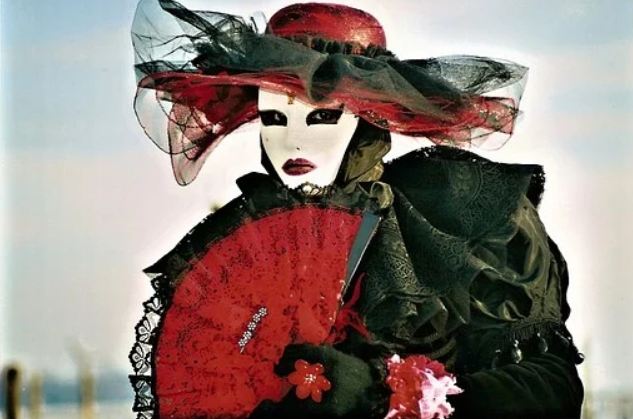Africa as a cradle of art history is a belief that has existed for centuries. The history of arts in the African continents plays a meaningful role in shaping global history and culture.
Generally, the description of African art is geared towards visual culture, rock arts, modern and historical paintings, sculptures, masks, and artistic creations of aesthetic value by country, people, and civilization.
In this article post, we’re particularizing on a detailed analysis of the female mask art piece in the African collection, traditionally used in Angola, Mozambique, southeastern Nigeria, Zambia, Malawi, Mali, Burkina Faso, Togo, Benin, and others maybe.
It takes in origin, history, features, uses, and facts; read on to gain insights into this African art piece.
Origin of the Female Mask Art Piece in the African Collection
The African female mask, in other words, called Mwana Pwo, or Pwewo, or Pwo, is an art piece made of sculpture that originated from the Chokwe culture of Angola.
History of Mwana Pwo
Recent name: mwana pwo
Original Chokwe name: Pwewo or Pwo
The female mask piece, Pwo, was discovered in the early 20th century between 1875–1925 from Chokwe culture.
Its primitive name, pwewo, refers to an aged female person who had given birth, while the present name, mwana pwo, accentuates youthful female prettiness – approved under European influence.
Ever since the initiation of this art piece, majorly Angola with other African countries like Nigeria, Mozambique, DR Congo, etc., have been using it for masquerade, collections for exhibitions, and curatorial highlights.
Masquers or masquerade participants who wear the mwana pwo to reverence the male ancestors acknowledge that they’re accountable for the community’s strength and affluence.
It’s categorized under a mask group named “makishi and is known to be a central character in that group. Makishi represents the spirits of the departed souls.
The African female mask art piece, mwana pwo, is an imagination of a supreme female heroine in the culture of Angola – particularly an attractive woman that is gentle in actions or behaviors and graceful in her speech.
The formation of the mask art resulted from the artistic talents of men in conjunction with male initiation.
The symbolism of the African Female Mask Art Piece
The masculine mask art piece, shared among the Chokwe of Angola, represents “Chihongo,” which implies a “spirit of wealth.’
Pwewo’s art is a symbolic image and indirect suggestion to express mystical ideas that denote wealth and power. In Chokwe society, the female face mask, mwana pwo, symbolizes the outstanding role of women as well as their fecundity.
On the other hand, mwana pwo stands for a female predecessor, but male dancers wear it at all times.
Features of the Masculine Mask Art Piece in Africa
Features of the African female face mask include depicting female beauty, such as hairstyles and scarification. It showcases a pretty young lady embellished with elaborate coiffure earrings and tattoos.
Though glamorized and unrealistic, the features on the mask put forward a portrayal of personality. It creates the likelihood that the artists sculpt it to the replica of a particular woman.
Medium of the Female Face Mask (Mwana Pwo)
Mwana Pwo, or Pwewo, the sculptural female mask art piece found amongst the Chokwe of Angola, is made of copper alloy, wood, pigment, and plant fiber.
Facts about the African Female Mask of the 20th Century from Chokwe
In this section, we will include other logical details that form reasonable conclusions about the African female face mask analysis.
The following realities hold for the feminine face mask art piece in the African culture by the Chokwe artist in the 20th century, according to the general belief:
· It is a representation of a youthful female decorated with fancy hairdos, tattoos, and earrings.
· The ancient artists carved it using Alstonia wood with very even, delicate thin walls.
· The color of its surface is usually reddish-brown, perhaps gotten from the combination of oil and red clay.
· Its patina is beautiful – showing a signal of long use.
· Usually wears the hairstyle of typical Chokwe women, called ‘tota’ wholly covered with red earth.
· Beneath the eyes are tattoos called ‘masoji,’ which connotes tears.
· Pwo or mwana pwo is among the most admired masks mask masks used for dancing in the Chokwe culture.
· The ears are; the nose is slender, while the mouth is elliptical.
· Also, on the face, other features include the curved chin and the modeled forehead delicately caved and modeled uniquely.
· It has triangular marks (known as cingelyengelye) on the center of the forehead and left cheek signifying the creator god of Chokwe, “Nzambi.”
Uses
For Ceremonies
In the African culture, the female face mask plays a pivotal role in cultural ceremonies or events for different reasons, such as gracing a good harvest, honoring the spirit of deceased ancestors, addressing peaceful tribal needs, and so on.
For Entertainment
The female tribal mask of Angola Chokwe, representing Chihongo “the spirit of wealth,” is used majorly for entertainment in the African community.
For Disguise
African masqueraders, specifically the Angolans and maskers from other continents, use mwana pwo for disguise or concealment, depicting a beautiful woman.
It’s usually worn in front of the face to hide the masker’s identity and by its features to establish fun at entertainment activities.
Summary
Today, the female face mask art piece has become the primary character in African culture, arts, and entertainment.
You’ll see it in many African countries during particular festivals, entertainment events, art exhibitions, etc., as masquerades or curatorial highlights.
It comes in different forms with various names given to it by the country or region in Africa.
In different places, helmet masks represent a female warrior, reliquary heads, kplekple face masks, and other sculpted figures representing women and the artworks of Africa.
Credit Line: The Museum of Fine Arts, Museum purchase, Brown Foundation Accessions Endowment, Major Acquisitions Centennial Endowment


